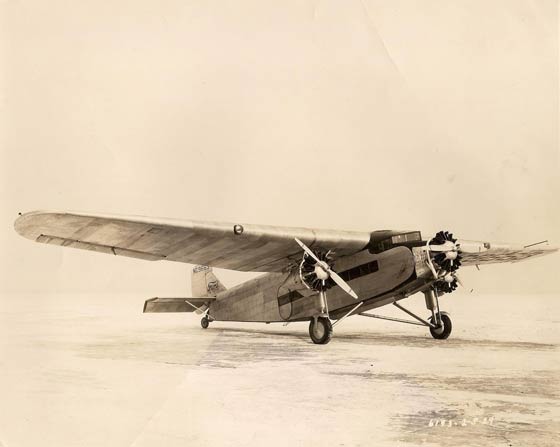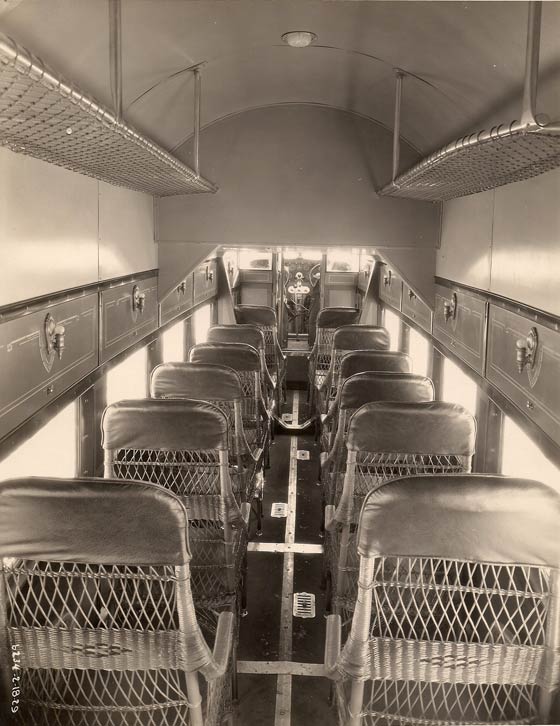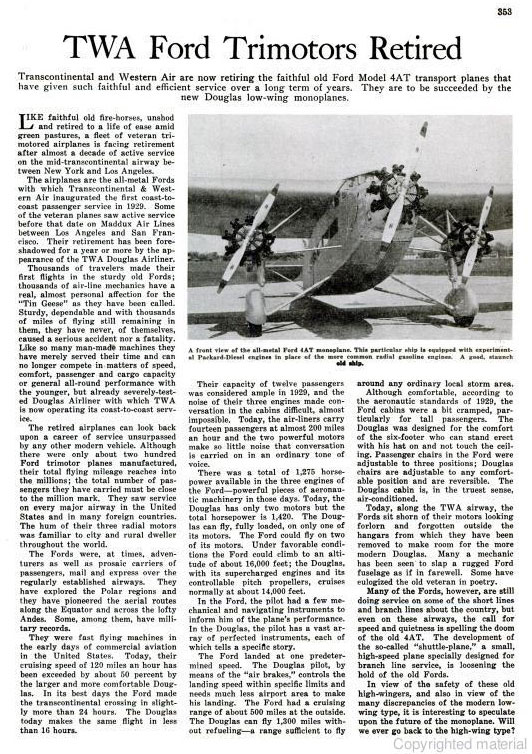|
INCOMPLETE
The Stout and Stout/Ford companies operated from 1919-1933. Their downfall, like many other businesses of the era, was hard times during the Great Depression. The Ford Motor Company came back to aircraft manufacture ca. 1942-45 during WWII, building B-24 heavy bombers at its Willow Run plant. There are many Web references (left sidebar),
In 1924, Henry Ford took up a partnership with the Stout Metal Airplane Co. in Dearborn, MI (the principal of Stout was William B. Stout; it was a coincidence that the aircraft were also stout). It became the Metal Airplane Division of the Ford Motor Company.
There were 292 landings by Ford aircraft across the Web sites operated by Delta Mike Airfield, Inc. Most were by civil and military models of the 4-AT series. For example, consider the landings at Tucson. Aside from prototypes, the early Ford trimotored aircraft were models of the 4-AT series. All landings by Ford aircraft at Tucson were by these transport aircraft. Of those identified by number and model in the Register, the 4-AT-A, -B, -C and -E models are represented. In total, there were 62 landings by 34 different Ford transport aircraft at Tucson.
Twenty-four of the 62 landings by Ford transports were by military pilots. The militarized Fords were designated C-4s or C-9s (a photograph of C-4, 29-216 is at the link). The structures of the models were virtually the same.
Below, the trimotor NC9663, a 4-AT-B model (credit, right sidebar). This is not a Register airplane, but is exhibited as a brand new, "poster" example of the type. Its official manufacture date was May 2, 1929, but note the date of the photograph is given as February 5, 1929. This airplane flew with a few United States airlines, including American Airways, and was exported to South America in 1937. It had conventional landing gear and carried 12-14 passengers.
Ford NC9663 Profile, February 5, 1929, Location Unknown (Source: Delucca)
 |
Below, a closer look at the forward fuselage and starboard engine. Note the external cables and bellcrank for the flight controls. The wide-stance landing gear improved ground handling. The cockpit was inside the aircraft, unlike the first couple of prototypes where the cockpit was open.
Ford NC9663 Profile, February 5, 1929, Location Unknown (Source: Delucca)
 |
Unlike its air transport competitor, Fokker, the Ford was an all-metal airplane. The metal was clad aluminum. The cladding consisted of a thin layer of pure aluminum covering the tougher inner alloy. The pure aluminum provided corrosion resistance. Where unclad aluminum was used inside the wings and fuselage, it was coated with an anticorrosion paint. Ford airplanes, because of their all-metal construction, took on the nickname, "Tin Goose."
Below, the interior of a Ford liner. Note the sparse furnishings consisting mostly of leather and cane chairs and small wattage light bulbs. The heater vents on the floor were engineered to take advantage of heat exchanged through the metal shroud over the exaust pipe running ventrally on the aircraft (see photo above). We can wonder how many pieces of hand luggage fell from the overhead racks.
Ford Liner Interior, February 18, 1929, Location Unknown (Source: Delucca)
 |
Compare these photos with the Ford 5AT-C NC428H. The photograph on that page was also provided by Mr. Delucca.
The Ford trimotors that landed at Tucson are tabulated below. The links take you to pilot biographies and airplane technographies published on this site. Pilot's names with "et al." after them means the airplane landed at Tucson more than once flown by different pilots. The numbers in "quotes" are as they appeared in the Register. However, it is unclear what the pilot was referring to. There are no serial numbers that high for Ford trimotors. Perhaps they are squadron numbers. Does anyone KNOW?
Another puzzle in the list is "95636" flown by D.W. Tomlinson. I found no reference to a Ford trimotor assigned this number. Nor do numbers like "29-194" or "28-250" or any other reasonable combination show up on Joe Baugher's site as Fords. Nor is there a civil "9563" or a "5636". Tomlinson's handwriting in the Register is very clear, and he did write "95636". If you can help solve the puzzle, please let me KNOW.
As far as is known, only one of our Register Fords is still in existence. It is 4-AT-E NC8400, serial number 62, built in 1929 and flown by Pan American Airways. It is located at Kal Aero, Vicksburg MI and is awaiting a possible rebuild. If you're interested in some of the (few) other Ford trimotors still flying, please direct your browser to the link.
In 1934, the airlines began phasing out their trimotor workhorses. The article, below, from Popular Aviation (PA), December, 1934, summarizes their retirement by TWA. TWA replaced their Fords with Douglas DC models.
Retirement of the Ford Trimotors, Popular Aviation, December, 1934 (Source: PA)
 |
---o0o---
Dossier 3.1.16
THIS PAGE UPLOADED: 02/16/10 REVISED: 09/21/14
|





